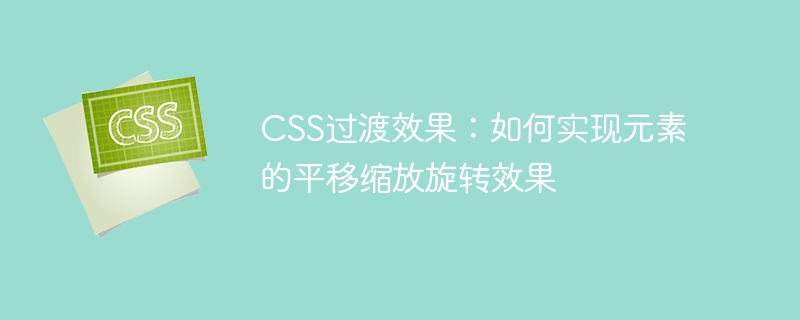

CSS transition effect: How to achieve the translation, scaling and rotation effect of elements
CSS transition effect is one of the commonly used technologies in web development, which can be achieved through the transition attribute of CSS A smooth transition from one style to another. In this article, we will learn how to use CSS transition effects to achieve translation, scaling, and rotation effects of elements, and provide corresponding code examples.
.btn { transition: transform 0.5s ease; } .btn:hover { transform: translateX(100px); }
In the above code, we added a transition effect to the button element, transform Changes in properties transition from an initial state to a final state. When the button element is hovered, the style of the :hover pseudo-selector will be applied, causing the button element to translate 100 pixels along the X-axis.
.image { transition: transform 0.5s ease; } .image:hover { transform: scale(0.5); }
In the above code, we add a transition effect to the image element and pass: The style of the hover pseudo-selector transitions the size of the image element from the initial state to the final state to achieve a shrinking effect.
.text { transition: transform 0.5s ease; } .text:hover { transform: rotate(45deg); }
In the above code, we added a transition effect to the text element and passed:hover The style of the pseudo-selector transitions the text element from the initial state to the final state to achieve a rotation effect.
Summary:
By using the transition property and transform property of CSS, we can easily achieve the translation, scaling and rotation effects of elements. Using the :hover pseudo-selector style, we can trigger these effects in specific states. These transition effects can add some dynamics and interactivity to web pages and improve user experience.
The above is the method and sample code on how to realize the translation, scaling and rotation effects of elements. I hope this article can help you achieve CSS transition effects.
The above is the detailed content of CSS transition effect: how to achieve the translation, zoom and rotation effect of elements. For more information, please follow other related articles on the PHP Chinese website!




